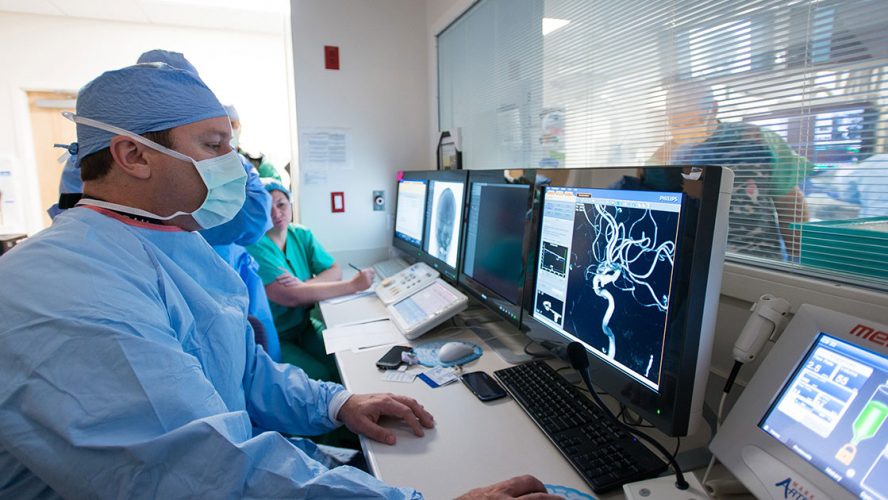If you think you’re having a stroke, don’t wait to get medical help.
“One of the main reasons people don’t get treatment is they show up too late,” says Baptist Health neurovascular surgeon Dr. Eric Sauvageau, director of the Stroke & Cerebrovascular Center at Baptist Medical Center Jacksonville. “People wait and lose precious time.”
The acronym BE-FAST explains what to look for: issues with Balance; Eye problems; changes to the Face, like droopy eyes, headaches or vision problems; Arm weakness; Speech problems like slurring; and how much Time has passed.
“Anything sudden is the sign it could be a stroke,” says Baptist Health neurovascular surgeon Dr. Ricardo Hanel, director of the Baptist Neurological Institute, who urges patients with sudden symptoms to get treatment right away.
Reducing risks
Strokes can happen at any age. Still, 80 percent of strokes are preventable.
Patients need to focus on overall wellness, including maintaining a healthy weight and low cholesterol, controlling blood pressure and treating sleep apnea.
There’s one big stroke risk factor to avoid — smoking.
“Cigarettes have everything to do with brain aneurysms,” says Dr. Hanel. “If you’re a smoker, you’re much more likely to have an aneurysm.”
Making progress
Stroke treatments have advanced in the past 20 years, and even more progress is being made now.
For example, if a patient has a stroke due to a large vessel occlusion, doctors can successfully open a clogged blood vessel by inserting a microcatheter into an artery in the groin and threading it through the body up to the brain. Clot buster medication can be given to patients within three hours of a stroke to break up a clot that’s clogging an artery.
Both Dr. Hanel and Dr. Sauvageau have been involved in clinical trials to advance the diagnosis and treatment of strokes.
Current trials are looking at ways to detect a stroke before a patient gets to the hospital. Paramedics can perform a test similar to an EKG to generate a map of the brain and see what areas are affected by the stroke. The software can help medical staff save 45 minutes of treatment time.
Coordinated care efforts among emergency personnel — including medics, doctors and nurses — is crucial.
Recently, Dr. Sauvageau’s patient had a stroke while working out. With quick diagnosis and treatment, the patient went from paralysis to moving within minutes.
“It’s humbling,” he says. “There’s nothing else we’re doing in medicine that has this spectacular effect.”

